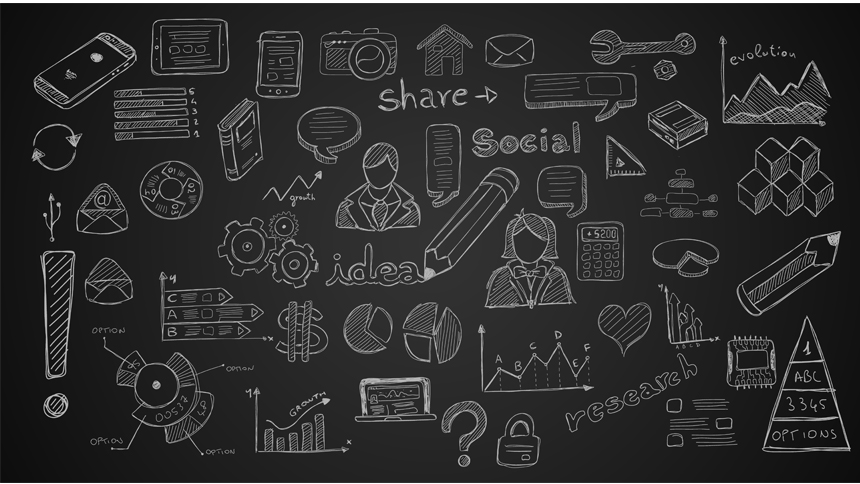Today, we live in a perception world. In fact, we live in an augmented reality.
Fact 1
Tesla’s market capitalization is currently greater than almost the entire established auto industry combined. To put it in perspective, Tesla is worth more than General Motors, Ford, BMW, Daimler, Honda, Hyundai, Nissan, Mazda, Aston Martin, Volkswagen, Subaru, and Fiat Chrysler combined.
In 2016, just four years ago, the market capitalization of these companies was;
Ford — $56.8 billion
General Motor — $51 billion
Tesla — $31.5 billion
As of 1st January 2020, Tesla was capped at $75.7 billion, and by September 2020, it had skyrocketed to $458.9 billion.
Fact 2
Tesla delivered 499,550 cars by the end of 2020, made a revenue of $20.79 billion, and is currently valued at $668 billion.
Ford delivered over 1.18 million cars by the end of 2020, made a revenue of $130.9 billion but valued at $34.9 billion.
It doesn’t make a lot of sense, so what’s happening?
The dictionary describes Perception as the process by which an individual selects, organizes, and interprets stimuli into a meaningful and coherent picture of the world.
People’s perceptions are far more important than their knowledge of object reality. People establish the meaning of something based on how you make them perceive that thing.
The media said Tesla stocks rose because it surpassed Wall Street’s revenue predictions for the third quarter in 2020. The first perception painted by Wall Street was a dark and gloomy future for Tesla, so even when Tesla did slightly better than the projections, it was perceived as an impossible feat achieved.
Here are two other perceptions that have caused Tesla’s stock rise that may be untrue. I call them perception against objectivity.
- The market is pricing the stocks with the idea that Tesla will eventually gain 100% market share of the global automobile market, which is highly unlikely.
- Investors believe Tesla’s EV model, tech, battery power, and infrastructure create an entirely new industry instead of disrupting an existing one. Although this one is close to the truth, Tesla now has some serious competitors like BYD, which is already a giant in China and is one of the fastest-growing auto companies globally.
But the real question here isn’t why it’s unfair for Tesla to be worth this much compared to the other companies. There’s a lot to learn, especially how we can apply perception marketing theory to our own endeavors. In today’s world driven by likes, shares, thumbs-ups, and social media influencers, you must take perception marketing seriously if you’re going to succeed.
Perception marketing is the deliberate effort by which a seller influences its potential consumer’s external stimuli and experiences so that the consumer “naturally” chooses the seller’s product subconsciously.
For example, Facebook uses persuasive techniques technology to change your behavior without triggering your awareness. Facebook created “tag a friend” to get you back on the platform. When you receive a tag notification, it automatically triggers your sense of curiosity, and it’s almost impossible to ignore it.
 The two factors that create perception are;
The two factors that create perception are;
- Stimuli from an external environment
- Expectation based on past experiences
Now let’s talk about them individually. Let’s begin with Stimuli from an external environment. If you’re going to create perception through stimuli from an external environment, there must be;
Problem recognition (internal and external). You must sell/highlight a problem even if it doesn’t exist at the time. Steve Jobs sold us the idea that there was a problem with phones which had buttons.
If it does exist, it must be exaggerated.
When you watch a Nike ad, it sells you the perception that if you were ever going to play like Michael Jordan in a basketball game, you had to be wearing an Air Jordan. But the truth is Michael didn’t start out doing legendary slam dunks in a Nike. Michael actually wore Adidas and almost didn’t sign the Nike deal because he preferred Adidas.
Information; you must provide insight into that problem and educate your users. Some brands exaggerate problems or undermine existing solutions. Heck! Some brands actually create problems, then help you solve those problems.
It’s been widely speculated that Microsoft began creating viruses that attacked their software, then created anti-viruses and sold them to users.
Cigarette companies sell the addiction and sometimes sell the solution too; Nicotine patches and gums to help quit smoking.
R.J. Reynolds is the parent company that owns Niconovum, a Swedish brand that sells innovative nicotine therapy solutions such as Zonnic pouches and mouth sprays.

Determinant attribute/decision making. While providing information, you can direct your consumer’s thought process to specific determinant attributes that your product carries.
In the mid-2000s, as diabetes and obesity became prevalent in the US, consumers began to express concerns regarding the quantity of sugar used in Coca-Cola’s Coke drink. Sensing the behavior change, Coca Cola began to sell an alternative diet and zero-sugar coke. By 2018, Diet coke sales had surpassed sales of the classic coke.
- Expectation based on past experiences.
The media is the most powerful tool to shape and change perception. The media engages our senses, and because of its character of mass acceptance and repetition, it is the most effective tool for perception marketing.
You can create experiences that shape perception through the following process;
Redefine concepts => Reinforce new concepts via experiences (using media, industry experts, consistency, etc) => Societal Acceptability (policies, norms, infrastructure, etc)
In 1937, the US passed the Marijuana Tax Act, effectively prohibiting the use of cannabis on a federal level. By 2016, it had become legal for recreational use in California. Artists like Snoop Dogg and Wiz Khalifa had begun to push for the social acceptance of marijuana through their music videos: young, wild, and free. It has become a part of the hippie culture most young people emulate. Today cannabis is estimated to be the largest cash crop in California, with a value of more than $11 billion.
In conclusion, the only way brands can truly differentiate themselves in their customers’ minds is by taking the responsibility to build a perception in their minds. Now the moral ethics that guides each organization becomes the challenge. How far can brands go to make you addicted to them?
Written by : Klien Udumaga




